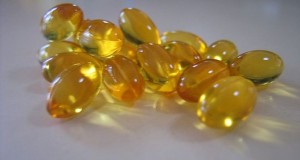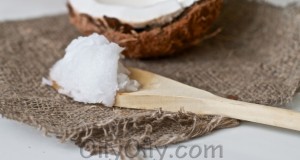
Photo credit: wikimedia
Oil palms give us such a variety of edible oils that it is easy to get confused. What is palm oil and what kind of it is more preferrable? Let’s have a closer look at these oils and find out the truth about palm oil.
Contents
Red palm oil
Palm oil, or palm fruit oil, is derived from the fruit pulp of the oil palms. What is red palm oil? It got its name from its red color caused by various carotenes like alpha-carotene and beta-carotene. Red palm oil does not contain cholesterol but is rich in saturated fats which may actually increase cholesterol levels. This oil has a great number of uses, although it is mostly used for cooking; however, it can also serve to produce biodiesel.
YOU MIGHT BE INTERESTED IN: What is Better: Palm Oil vs Coconut oil
Palm kernel oil
Wikipedia states that this oil is derived from the kernel of an oil palm and should not be confused with coconut oil, which is extracted from the coconut kernel. Palm kernel oil is more saturated than palm fruit oil and is also high in saturated fats. Same as palm oil, palm kernel oil is used for cooking but also in food manufacturing.
Crude palm oil
When palm kernels are smashed and heated, the oil produced is thick, lumpy and has an amount of inedible substances in it. In order to remove them, the oil is first purified. Since such components as fruit fiber and pieces are easily removed, no chemicals are needed for the purification process. After that such substances as trace metals and unsaturated steroid alcohols have to be removed, and for this chemicals are required. The final product of these processes is edible and is called crude palm oil, which can be used for different purposes.
Palm oil in food manufacturing
Fractionated palm oil
Fractionated palm oil has a higher melting point and, therefore, is perfect for coating chocolate products, for example. The process is done in two steps: crystallization and filtration. Firstly, during crystallization the oil is melted at different temperatures and is fractioned into liquid and solid components. Then during filtration these components are separated, and the oil is divided into liquid palm olein and solid palm stearin. Fractioned palm oil is thicker than the normal one and has higher concentration of saturated fats which is not beneficial for health. Because of high melting point such oil is widely used in chocolate coatings, butter and margarine.
Hydrogenated palm kernel oil
Hydrogenation is a process of turning palm kernel oil from liquid into semisolid and more stable substance. Such oil, like fractionated ones, will also have high melting point and is widely used in margarine, pastries and also for frying at high temperatures. As well Doctor Oz names a huge number of other processed foods such as chips and fast-food, where hydrogenated oils are used, and explains why these products are better be avoided. The reason why hydrogenated palm oil is more preferable than other vegetable oil is that palm kernel oil is already high in saturated fats and therefore there is no need to hydrogenate it as thoroughly as other oils.
Sustainability problem: sustainable palm oil
It all started with vast removal of forests in Indonesia with the aim to make place for oil palms. Such deforestation led to the loss of the natural habitat of two species of orangutan, both being endangered. So in 2004 the Roundtable on Sustainable Palm Oil was established. Its main aim is sustainable production of palm oil, work and cooperation of manufacturers, buyers, growers and various organizations. According to RSPO, palm oil plantations have to comply with the agreed environmental standards, and sustainability is kept at environmental, social and even economic levels.
Except for that, it is also highly recommended to choose organic palm oil, meaning that the palms were not exposed to any toxins during growing and harvesting.
SEE ALSO: Where Does Palm Oil Come from?
Palm oil prices
If you wish to buy palm oil for cooking or health purposes, you can check its availability online as well as prices. In general, the prices for the bottle or 1/2 kg are around 10$, but may vary depending on the dealer and the amount of oil you are planning to purchase. If to consider the prices on palm oil as biodiesel, in July 2013 the price for palm oil was 2.34K Malaysian Ringgit per metric ton of oil (US 1$ is 3.3 RM).
 Oilypedia.com – Benefits And Uses Of Supplemental and Essential Oils
Oilypedia.com – Benefits And Uses Of Supplemental and Essential Oils 



Pingback: What is Palm Oil: Everything You Need to | OilyPedia.com - All about Supplemental And Essential Oils